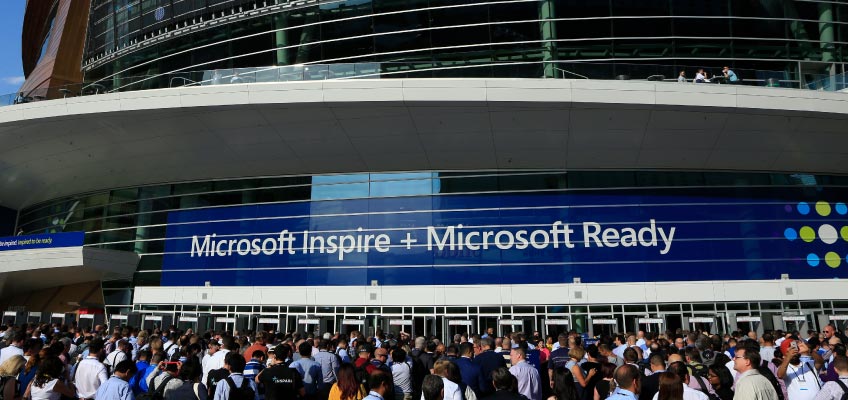Microsoft Adds More Live Streams with Less Infrastructure to Inspire
Microsoft Inspire is an annual conference held by Microsoft, designed for its partner community. At this event, partners from around the world come together to network, learn about Microsoft’s roadmap for the upcoming year, and collaborate on solutions to meet the needs of customers. The conference typically features keynote addresses from Microsoft executives, training sessions, and opportunities to connect with Microsoft experts and other partners. It’s a platform for innovation, partnership building, and the sharing of best practices within the Microsoft partner ecosystem.
Jeff Tyler
Digital Media Experience Lead, Microsoft

Microsoft Inspire, held in Las Vegas, is one of the biggest partner events, attracting more than 18,000 visitors from around the world. Keynote sessions, and other breakout information and training presentations are very popular. In many cases, the demand for those sessions can outweigh the capacity of the rooms in which they are held.
To meet the increased demand, Microsoft set up overflow rooms in four different venues in Las Vegas, where those who could either not make it to the other locations or were unable to be seated in the main venues, would be able to view the content they were most interested in seeing.
What Microsoft needed was a platform to distribute live streams throughout the facility, to other adjacent hotels, and back to Redmond for live delivery to and over Microsoft Azure. They needed to select and set up the streams quickly and easily, and make sure their digital event team run by Evia, a leading event services company, could quickly learn and use the technology.
Past Inspire events required Microsoft to use a dedicated fiber-based video network to support multiple streaming technologies and workflows. The event streaming and capture has been labor-intensive and expensive, with a new installation of a high-speed data network, and separate baseband video network that could cost up to $250,000 in dedicated fiber for each event.
The solution was to use Haivision technology in conjunction with the SRT protocol – an open-source video streaming protocol developed by Haivision – allowing better live coverage, tighter content security, and greater control over the quality of the content.
Using the Haivision Media Platform in conjunction with Makito X encoders and Haivision Play set top boxes, Microsoft was able to stream and record 30 channels of conference presentations simultaneously, throughout each day of the event. Each of the overflow rooms displayed two versions of produced content—one with captions, and one without, all managed by an Evia operator. As a result, over 1,400 hours (about two2 months) of content was streamed and recorded using the Makito X’s storage functionality as a backup.
In addition, Haivision played a part in helping to distribute the keynote address by Microsoft CEO Satya Narayana Nadella, which took place at the T-Mobile Arena, using a slightly different setup than the conference sessions.
The primary feed was sent via satellite to Redmond, and a Makito X with SRT was provisioned as backup. Once received in Redmond and final production had been applied, the stream was sent using SRT to Azure Media Services for delivery to Microsoft’s virtual attendees viewing from around the world. At the same time, more Makito X encoders with storage fueled the on-site Haivision Media Platform deployment to engage all attendees in each of the Vegas locations.
According to Microsoft, training on the system took “all of two minutes.” The main benefit for Microsoft was that they were able to install the Makito X encoders and decoders and have them in working order almost immediately. They deploy fewer on-site technicians and are getting much higher-quality encoding than they have in the past. In the future, they’ll be able to lower costs and have much more interactive video workflows, giving them much higher value for every dollar spent.
Microsoft will expand their use of this workflow at their Ignite event in autumn, 2018. The plan is to have a video wall in a main atrium, in addition to other overflow rooms, where anyone will be able to watch live feeds from remote sessions and sync audio through a smartphone app. With both redundancy and diversity comprising the most important factors of their signal paths, Microsoft can take advantage of high-quality, low-latency encoders and decoders in conjunction with SRT technology and the powerful Haivision Media Platform, allowing them to distribute and deliver the best-quality video, regardless of the network being used.